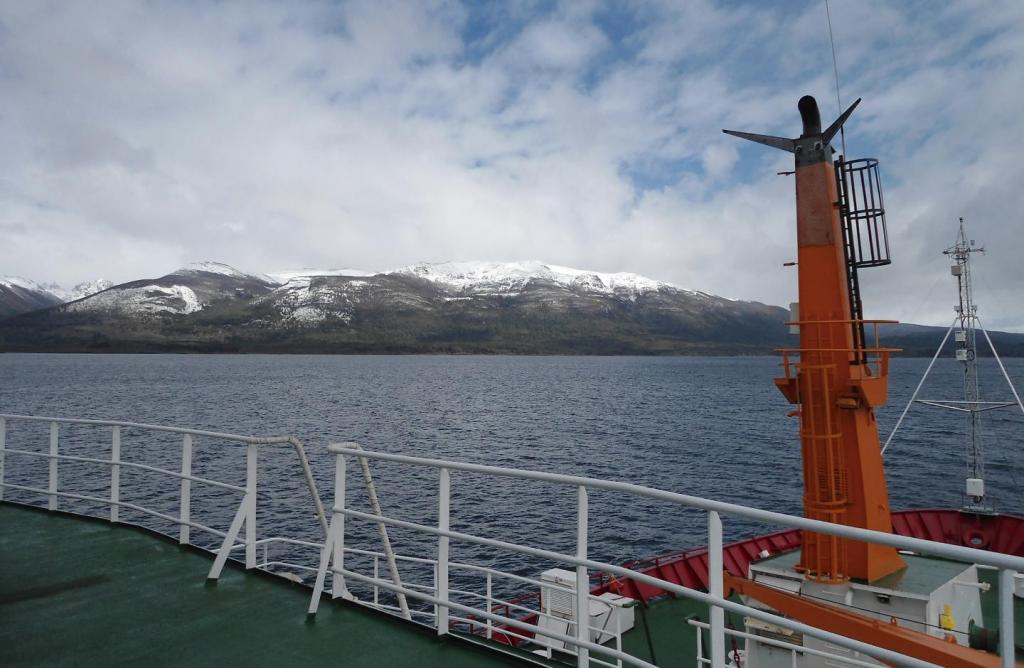You may have heard that 75% of the Earth’s surface is covered by water. But did you know that many properties of ocean waters strongly impact the atmosphere? For example, El Niño is a phenomenon characterized by abnormal warming of surface waters in the Tropical Pacific Ocean that may affect the regional and global climate–and also your vacation.
There are several factors that affect global climate change, including the process of heat exchange between the sea surface and the atmosphere and the effect of carbon dioxide on this process. With a coastline of more than 8,000 km² on the South Atlantic Ocean, Brazil had few resources until recently to study the impact that ocean waters have on the climate of the country and the South American continent. However, that changed in 2004 when the National Institute of Space Research (INPE) launched a project to study large scale ocean-atmosphere interactions in the South Atlantic Ocean. That was only possible after the Brazilian Antarctic Program (PROANTAR) acknowledged that the region in the South Atlantic Ocean bordering the Southern Ocean (the ocean that surrounds Antarctica) is a key region for modulating the weather and climate of South America because of its significant contrasts in sea surface temperature: in that region, warm waters coming from the Equator mix with cold waters coming from the Southern Ocean.

The 2004 project Ocean-Atmosphere Interaction in the Brazil-Malvinas Confluence Zone (INTERCONF) is part of the National Institute for Science and Technology of the Cryosphere. INTERCONF is coordinated by INPE researchers Ronald Buss de Souza and Luciano Ponzi Pezzi and is currently the only project in the Brazil-Malvinas region studying ocean-atmosphere coupling and its impact on the weather in South America. The initiative acts as an umbrella for a number of studies and engages undergraduate, master’s and doctoral students from several institutions, including INPE, the Universidade Federal de Santa Maria (UFSM), the Universidade Federal do Rio Grande do Sul (UFRGS) and the Universidade Federal do Rio Grande (FURG).
The INTERCONF project works in partnership with the Brazilian Navy. PROANTAR and the navy provide operational support for Brazilian Antarctic researchers and four navy ships with all the equipment needed to collect research data: the research vessels Cruzeiro do Sul (H38) and Vital de Oliveira (H39), the Oceanographic Support Ship Ary Rangel (H44) and the Polar Ship Almirante Maximiliano (H41). The vessels carry a crew of about 90 to 100 people, which includes around 20 researchers and navy personnel.
The collected data are used for research carried out at INPE in the most diverse areas of Oceanography and Meteorology. That includes studies on the physical and biological processes of the carbon dioxide (CO2) and water cycles and on heat fluxes between the ocean and the atmosphere and their role in regional and global climates and in climate change. “These measurements provide important information for Southern Brazil, because the movement of cold fronts over the state of Rio Grande do Sul is directly affected by variations in sea surface temperature and vertical heat and humidity fluxes” explains Ronald.
On board
Every year, the INTERCONF project utilizes Brazilian Navy ships passing through the Brazil-Malvinas Confluence region, to take oceanographic and meteorological measurements that had not been taken before, even by the Navy. Professor Ronald’s team goes to sea to measure variables such as sea water salinity and temperature, air temperature, relative humidity, wind direction and intensity and ocean current direction and intensity. These measurements enable calculations of heat, momentum and gas transfers between the ocean and the atmosphere, which are used to improve weather and climate models.
The last INTERCONF research cruise was held in October and November of 2018, when INPE’s team participated in the 37th Antarctic Operation onboard the Polar Ship Almirante Maximiliano. After making measurements in the Brazil-Malvinas Confluence region, the ship sailed to the Southern Ocean where the group took new measurements contributing to an international initiative of the World Meteorological Organization (WMO) called the “Year of Polar Prediction (YOPP)”.
According to Ronald, the INTERCONF operation begins long before boarding the ship, with the preparation of the data collection instruments, which must be assembled and undergo a period of testing. Once prepared, the equipment is loaded onto the ship and properly installed. Along the route between Brazil and Antarctica, several devices are used for taking measurements, including atmospheric radiosondes, current meters and oceanographic equipment to measure water temperature and salinity, an automatic weather station and a micro-meteorological tower equipped with sensitive meteorological equipment to measure air-sea heat, momentum and gas fluxes.
To understand better
The physical variables involved in the ocean-atmosphere interface are studied by observing the sea surface temperature variation between the Brazil Current, which comes from the Equator and is characterized by warm saline waters, and the Malvinas Current, which comes from the South and is characterized by cold waters with lower salinity. In the area where these two bodies of water meet, there can be a sea surface temperature variation of more than 10ºC within just a few miles.
Reporter: Diossana da Costa;
Graphic Design: João Vitor Bitencourt and Projetar Junior Industrial Design Company;
Photography: Personal archive/ Ronald Buss de Souza.
Published 2016









